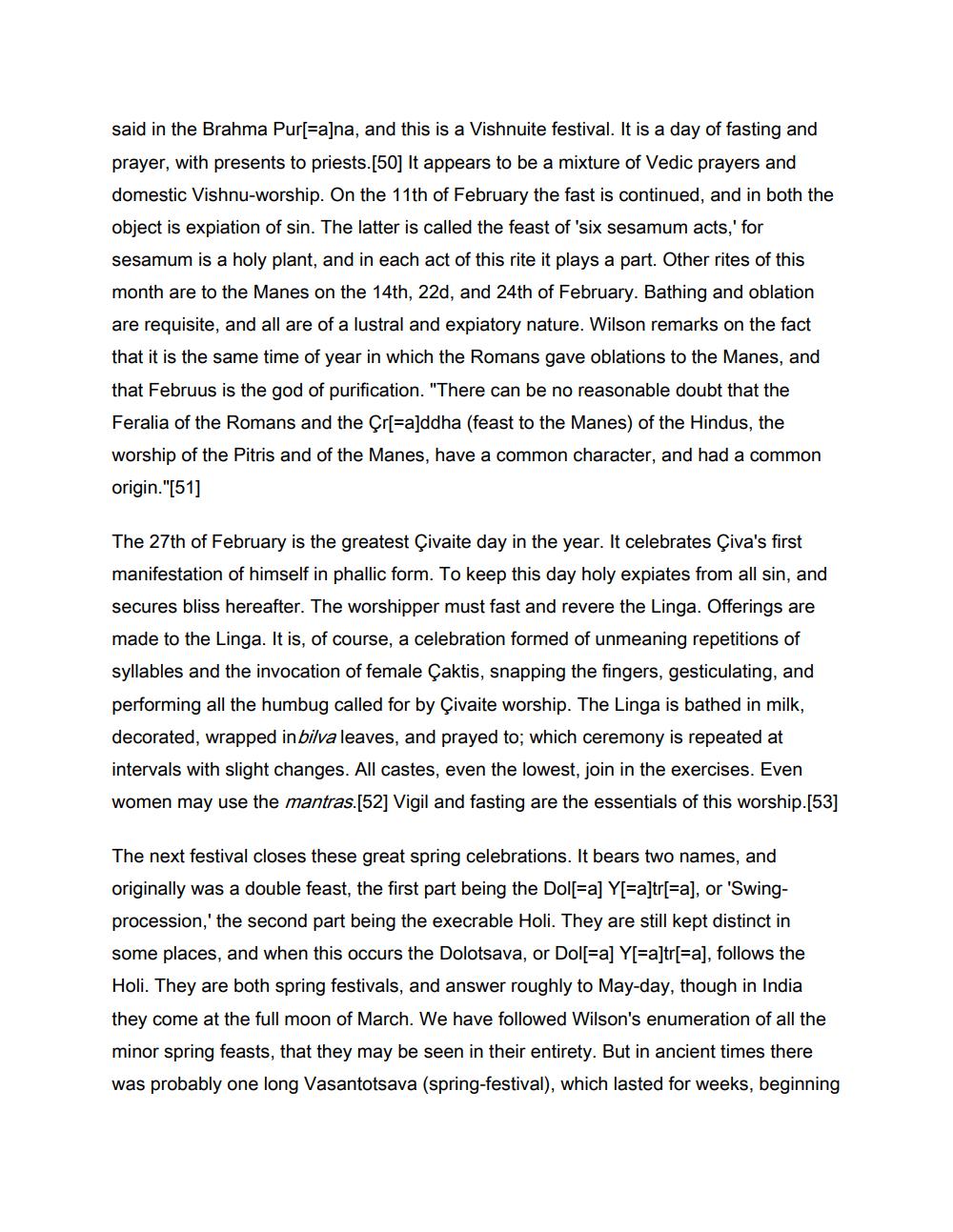________________
said in the Brahma Pur[=a]na, and this is a Vishnuite festival. It is a day of fasting and prayer, with presents to priests.[50] It appears to be a mixture of Vedic prayers and domestic Vishnu-worship. On the 11th of February the fast is continued, and in both the object is expiation of sin. The latter is called the feast of 'six sesamum acts,' for sesamum is a holy plant, and in each act of this rite it plays a part. Other rites of this month are to the Manes on the 14th, 22d, and 24th of February. Bathing and oblation are requisite, and all are of a lustral and expiatory nature. Wilson remarks on the fact that it is the same time of year in which the Romans gave oblations to the Manes, and that Februus is the god of purification. "There can be no reasonable doubt that the Feralia of the Romans and the Cr[ra]ddha (feast to the Manes) of the Hindus, the worship of the Pitris and of the Manes, have a common character, and had a common origin."[51]
The 27th of February is the greatest Çivaite day in the year. It celebrates Çiva's first manifestation of himself in phallic form. To keep this day holy expiates from all sin, and secures bliss hereafter. The worshipper must fast and revere the Linga. Offerings are made to the Linga. It is, of course, a celebration formed of unmeaning repetitions of syllables and the invocation of female Çaktis, snapping the fingers, gesticulating, and performing all the humbug called for by Çivaite worship. The Linga is bathed in milk, decorated, wrapped in bilva leaves, and prayed to; which ceremony is repeated at intervals with slight changes. All castes, even the lowest, join in the exercises. Even women may use the mantras.[52] Vigil and fasting are the essentials of this worship.[53]
The next festival closes these great spring celebrations. It bears two names, and originally was a double feast, the first part being the Dol[=a] Y[=a]tr[=a), or 'Swingprocession,' the second part being the execrable Holi. They are still kept distinct in some places, and when this occurs the Dolotsava, or Dol(=a] Y[=a]tr[=a), follows the Holi. They are both spring festivals, and answer roughly to May-day, though in India they come at the full moon of March. We have followed Wilson's enumeration of all the minor spring feasts, that they may be seen in their entirety. But in ancient times there was probably one long Vasantotsava (spring-festival), which lasted for weeks, beginning




